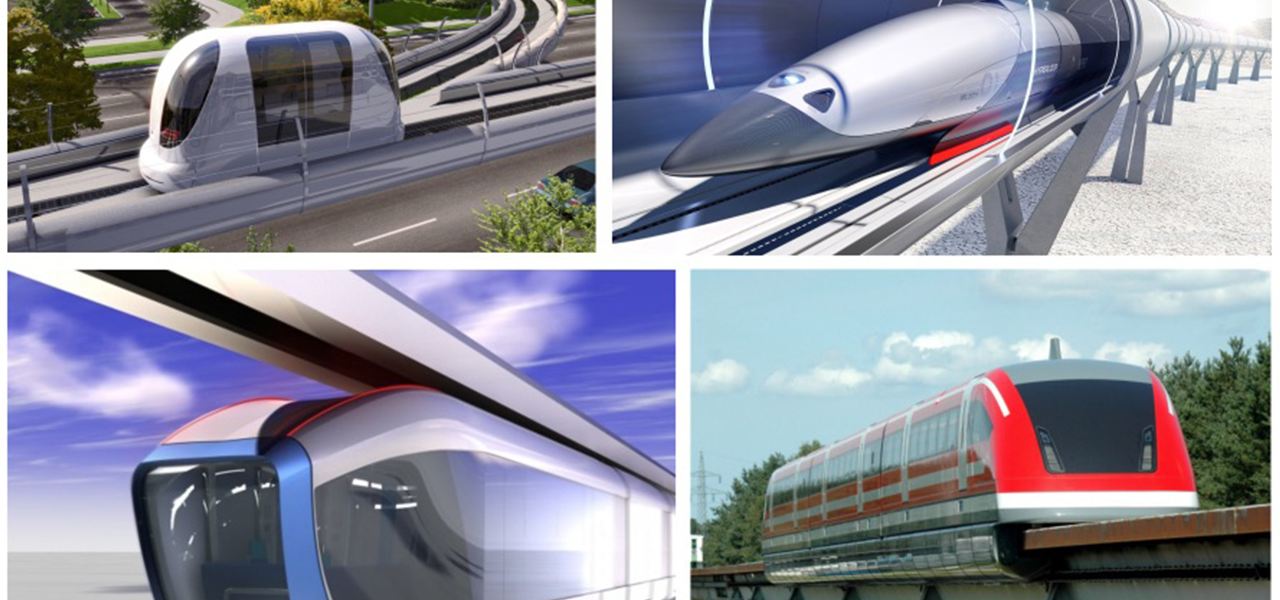
It’s like a sort of two-wheeled giant waffle that weaves in and out of traffic. It’s a funny-looking red engine, one for firefighters, and it stops at the foot of a burning building. The viewer watching is both perplexed and in awe, waiting for the climax: a drone is released from the vehicle, rushing to dampen the flames… No, this brief description is not from a Walt Disney movie, but in fact from a concept video for a gyroscopic vehicle thought up by Dahir Semenov. With tens of millions of views under its belt, his proposal incarnates the ironic concept of gadgetbahn down to a T.
Miracle trains
Made up of the German word for rail or train, “Bahn”, and the English word “gadget”, this portmanteau word is pretty self-explanatory. Invented at the beginning of the noughties to challenge the utility and performance of Maglev-based projects, it’s now back in the spotlight, following the buzz created by Hyperloop, Arrivo and various aerial gondola projects. Breaking through from behind this neologism is criticism towards technological solutionism, which prefers to speculate miracle solutions rather than patiently thought-out ideas on how to manage urban traffic. In a long read dedicated to the subject, Anton Dubrau alludes to the technical, physical and land obstacles which contradict gadgetbahn’s promise of increased speed and comfort at a reduced cost. “All these considerations come down to the one fundamental constraint on which everything else depends: the right of way — how much space do you have available, how straight is your path, how and where is the downtown access, and how much space is available at stations.” To sum it up, there is no miracle transportation solution. It’s an obvious statement that’s been colliding for decades with the beliefs of devout “pod people” who are ardent supporters of pod-based transport.
Will futurism perform?
These projects often stand out more for the enthusiasm aroused than by their genuine capacity to deliver solutions. The promise of technology hides a sea of major issues concerning mobility today. InternetActu highlights the environmental and capability issues, which get pushed aside when opposite the “need for speed”, which in reality, is not really a necessity for the average person. “There’s a growing divide between the problems people have and the problems tech companies are willing or able to solve. This divide is related to a growing inequality. When people live in an elite bubble, they don’t experience the everyday frictions of normal life.” Gadgetbahn also just goes to show how our vision of cityscapes of the future hasn’t changed. Elon Musk is the disciple of a new type of technological prophetism, promoting a supersonic Hyperloop and a mission to conquer Mars. Such ideas hark back to distant high-speed dreams of the 60s and 70s, in a time of Aérotrain and the Space Race…
However, gadgetbahn does have its uses. It’s power of seduction ensures that developers can stimulate the general public’s imagination, communities’ aspirations and investors’ ambitions. While Hyperloop has never exceeded speeds of 240mph during testing (a fraction of the promised maximum speed), it already has major financial backing from Virgin, General Electrics and even the SNCF. Hundreds of engineers are already addressing the issue, and the theoretical and technological progress made from nothing in such a short space of time is huge. Musk’s open source approach has ensured many prototypes see the light of day, which will without doubt open the door to commercial applications. Hyperloop might not keep all of its promises, but it has paved the way for a movement which we’ll reap the rewards just as much as the losses. At the end of the day, gadgetbahn adds the essential ingredient required for innovation: optimism!
